CHOPIN
24 Preludes Op.28
Martha Argerich
35,00 €
…is a phenomenon
CHOPIN 24 Preludes Op.28 Martha Argerich
Martha Argerich verfügt über die Technik, mit der Musik zu machen, was immer Sie will. Ob es die eindringliche, dunkle Melancholie der Nr. 2 in A-Moll oder das wirre Blitzen der No. 16 in B-Moll ist, diese starken Veränderungen der Stimmung, das Unberechenbare beeindruckt. Audiophile Pressing: CHOPIN 24 Preludes Op.28 Martha Argerich
Voted Into Gramophone’s Hall of Fame in 2012!
Martha Argerich was born in Buenos Aires. From the age of five, she took piano lessons with Vicenzo Scaramuzza. In 1955 she went to Europe with her family, and received tuition from Friedrich Gulda in Vienna; her teachers also included Nikita Magaloff and Stefan Askenase. Following her first prizes in the piano competitions in Bolzano and Geneva in 1957, she embarked on an intensive program of concerts. Her victory in the Chopin Competition in Warsaw in 1965 was a decisive step on her path to worldwide recognition.
Grammy Award-Winning Artist!
Martha Argerich rose to fame with her interpretations of the virtuoso piano literature of the 19th and 20th centuries. But she does not regard herself as a specialist in „virtuoso“ works — her repertoire ranges from Bach through Beethoven, Schumann, Liszt, Debussy and Ravel, to Bartók.

Inhalt:
CHOPIN 24 Preludes Op.28 Martha Argerich
Frederic Chopin (1810-1849)
24 Préludes Op. 28
Side 1:
1. No. 1 In C Major
2. No. 2 In A Minor
3. No. 3 In G Major
4. No. 4 In E Minor
5. No. 5 In D Major
6. No. 6 In B Minor
7. No. 7 In A Major
8. No. 8 In F Sharp Minor
9. No. 9 In E Major
10. No. 10 In C Sharp Minor
11. No. 11 In B Major
12. No. 12 In G Sharp Minor
13. No. 13 In F Sharp Major
14. No. 14 In E Flat Minor
Side 2:
15. No. 15 In D Flat Major
16. No. 16 In B Flat Minor
17. No. 17 In A Flat Major
18. No. 18 In F Minor
19. No. 19 In E Flat Major
20. No. 20 In C Minor
21. No. 21 In B Flat Major
22. No. 22 In G Minor
23. No. 23 In F Major
24. No. 24 In D Minor
25. Prélude No. 25 In C Sharp Minor Op. 45
26. Prélude No. 26 In A Flat Major Op. Posth.
More about: CHOPIN 24 Preludes Op.28 Martha Argerich
Exceptional talent
Virtuoso pianists who passed through Buenos Aires – Arrau, Gieseking, Rubinstein, Backhaus and Gulda – were impressed by her exceptional talent, and Gulda accepted her as his pupil in Vienna in 1955: „It was a most curious kind of instruction,“ Gulda recalled, „as there was really nothing that the girl couldn’t do. […] I didn’t know what I could teach her.“ But Martha Argerich still wanted to learn and also had lessons with Madeleine Lipatti and Nikita Magaloff, beginning her international career at the age of sixteen with first prizes in the 1957 International Music Competition in Geneva and the Busoni Competition in Bolzano.
International Chopin Competition
Three years later she made her first recording for Deutsche Grammophon: Brahms, Prokofiev, Ravel, Liszt and Chopin’s Scherzo no.3 and Barcarolle op.60. In 1965, following her first temporary withdrawal from concert life and further lessons with Arturo Benedetti Michelangeli and Stefan Askenase, she triumphed in the Warsaw International Chopin Competition.
Emotionally charged
(…) And yet the Chopin recordings that she has made are without exception models of their kind. Completed in 1839, the B flat minor Sonata remains Chopin’s best-known work on the basis of its Funeral March, a sombre marcia funebre that functioned as the sonata’s germ cell and that is no less emotionally charged than the three later movements. Martha Argerich’s recording of July 1974 sets great store by this emotional aspect of the piece, inspiring the thought that weaker pianists would burn their fingers in the fire that she kindles in the darkly tempestuous opening movement and in the framing sections of the Scherzo, but, thanks to her outstanding technique, she can sustain even exceptional tempi without coming to grief. As a result, the contrast with the lyrical second subject and, later, with the Scherzo’s cantabile Trio is all the more powerful in its impact.
Instinctive level
The „mourners“ move at a rapid pace, while the dynamic range of the superbly recorded piano creates a tremendous sense of expression. And the presto quavers of the remarkable unison finale acquire a conscious lack of focus, thereby producing the feeling of unreality that Alfred Cortot must surely have had in mind when he spoke of „fevered dreams“. In general, this reading of the B flat minor Sonata is typical of Martha Argerich’s whole style: this is not the work of an analytical and intellectual performer but of a pianist who approaches the music on an instinctive level and who can conjure up a whole range of moods on the basis of a whole range of tone colours. Her exuberance inevitably affects her audience, too, her often impassioned playing generating an emotional intensity that can leave no listener cold.
…a wholly natural impression
She recorded the op.28 Preludes in October 1975, a recording that reveals another essential aspect of her approach to Chopin: her playing creates a wholly natural impression that is especially clear from the C major Prelude, which is headed „Agitato“ and which she begins by striking a note of urgent insistency, with an extremely self-confident mezzo-forte, and although she takes the piece perceptibly slower from bar 21 onwards, she none the less produces an overarching sense of unity. In this regard, the First Prelude may serve as one example among many: here Martha Argerich avoids extremes, phrasing like a singer and playing the music straight, yet never becoming dull. Particularly wonderful is the wholly delightful way in which she savours the melancholy melody of the E minor Prelude, with its simple accented passing notes, before dazzling the listener with her sheer love of life in the boisterous Allegro molto. (…)
…logical inevitability
Listen, too, to the way in which she invests the brief Vivace in B major with a very real sense of weightlessness; and note finally her ability to bring out the menacing gesture of the Allegro in E flat minor. Here slow and fast pieces seem to alternate with logical inevitability, with the tension building in intensity, before slackening off once again. In the case of both the Sonata and the Preludes, the recording producer was Rainer Brock, the balance engineer Heinz Wildhagen. Martha Argerich returned to the studio with Wildhagen on 1 February 1977 to record the C sharp minor Prelude op.45 and the A flat major Prelude op. post. With the Sostenuto she adopted a particularly relaxed approach, whereas the Presto con leggierezza, by contrast, positively scurries past, as though nothing else mattered in the world except elegance and high spirits.
…is a phenomenon
There is no doubt that Martha Argerich is a phenomenon. But she is also an exceptional pianist. Gregor Willmes (Translation: Stewart Spencer) There are very few recordings of the 24 Preludes that have such a perfect combination of temperamental virtuosity and compelling artistic insight. Argerich has the technical equipment to do whatever she wishes with the music. Whether it is in the haunting, dark melancholy of No. 2 in A minor or the lightning turmoil of No. 16 in B flat minor, she is profoundly impressive. It is these sharp changes of mood that make the performance scintillatingly unpredictable.
Audiophile Pressing: CHOPIN 24 Preludes Op.28 Martha Argerich
Additional Information
| Weight | 1 kg |
|---|---|
| Dimensions | 35 × 35 × 5 cm |
There are no reviews yet.


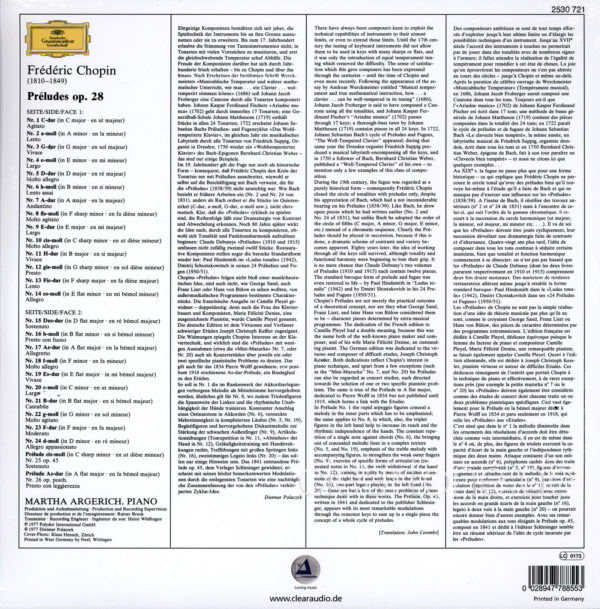
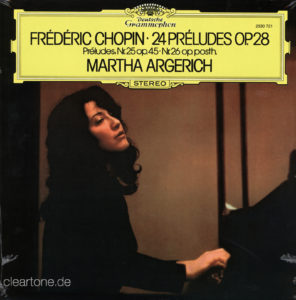


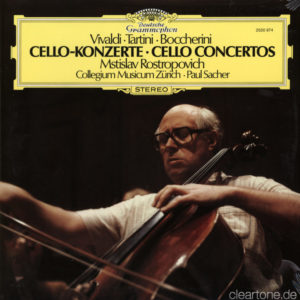
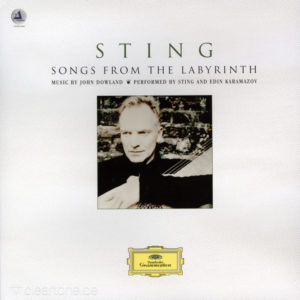


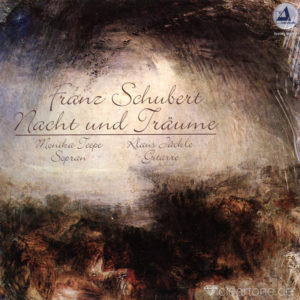

Reviews